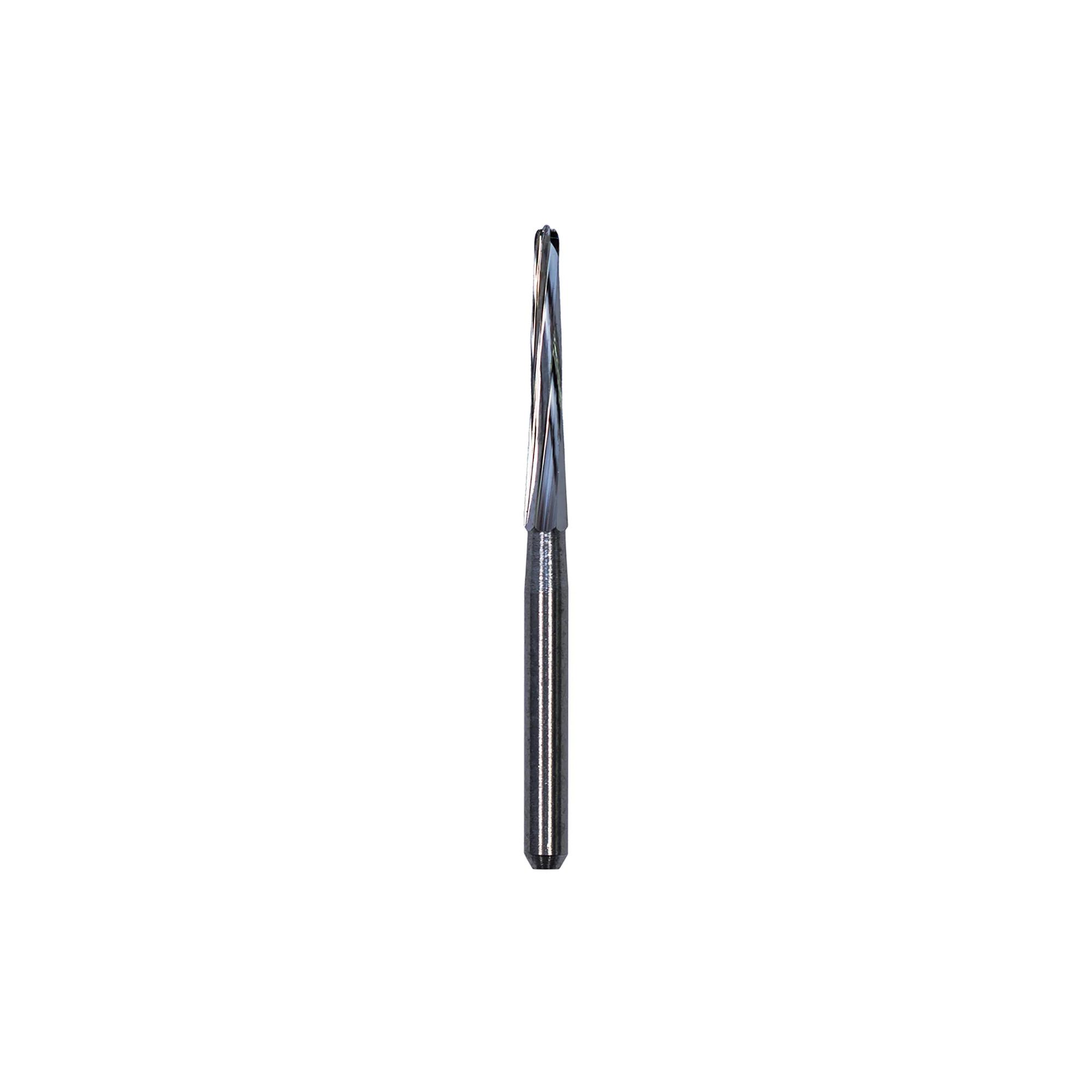Introduction to Dental Burs: Usage and Importance
Dental burs are indispensable tools in modern dentistry, facilitating a range of procedures that span from the simplest filling to the most complex surgical operation. These rotary instruments, equipped with cutting blades and made from materials like steel, tungsten carbide, and diamond grit, are essential for the effective cutting, grinding, and removal of hard tissues such as tooth enamel or bone. Understanding which bur to use for each specific treatment not only enhances the efficiency of dental procedures but also optimizes patient comfort and outcomes. This comprehensive guide aims to provide clarity on the selection of dental burs for various treatments, taking into account the specific attributes and applications of each type.
Surgical Burs: Essential for Oral Surgeries
● Materials and Design of Surgical Burs
Surgical burs, often crafted from tungsten carbide or diamond, are renowned for their durability and precision. Tungsten carbide burs are particularly valued for their strength and resistance to wear, making them ideal for high-stakes surgical procedures. Diamond burs, on the other hand, offer unparalleled sharpness and are highly effective in cutting through hard tissues.
● Applications in Oral Surgery
In oral surgery, the choice of bur can significantly influence the outcome of the procedure. Tungsten carbide burs are commonly employed for bone contouring and removal, providing surgeons with the control and reliability needed for delicate operations. Diamond burs are preferred for procedures that require precise cutting and minimal tissue trauma, such as the removal of impacted wisdom teeth or complex extractions. The use of these high-quality burs ensures that surgeries are performed efficiently and with the highest degree of accuracy, reducing operative time and enhancing patient recovery.
Diamond Burs: High-Speed Precision Tools
● Role in Grinding Tooth Tissue and Porcelain
Diamond burs are quintessential in high-speed dental procedures, particularly those involving the grinding of tooth tissue and porcelain. Their exceptional hardness and sharpness allow for rapid and efficient removal of material, making them a staple in restorative dentistry.
● Usage in Restorative Dentistry
In restorative dentistry, diamond burs are frequently used to shape and contour crown preparations, veneers, and fillings. Their ability to swiftly remove bulk while leaving a rough surface aids in the adhesion of restorative materials. Furthermore, their availability in various grits and shapes provides dentists with the versatility needed to address different restorative challenges, from fine-tuning margins to adjusting occlusion.
Tungsten Carbide Burs: Strength and Versatility
● Dental Applications and Benefits
Tungsten carbide burs are celebrated for their robustness and versatility across a wide range of dental treatments. Their sharp, precision-ground blades are perfect for cutting through both natural tooth structure and synthetic materials with ease. This makes them particularly effective for cavity preparation, amalgam removal, and trimming of dental prosthetics.
● Comparison to Diamond Burs
While both tungsten carbide and diamond burs are essential in dentistry, their applications can vary. Tungsten carbide burs provide a smoother finish and are often preferred for procedures that demand precision without the excessive roughness that diamond burs might leave behind. This quality makes tungsten carbide burs particularly useful for procedures like crown removal and composite resin trimming, where a delicate touch is required.
Ceramic Burs: Ideal for Dentin Removal
● Specific Uses in Cavity Preparation
Ceramic burs have carved out a niche in cavity preparation, especially when it comes to the removal of dentin. Known for their gentle cutting action and heat resistance, they reduce the risk of thermal damage to the pulp, which is crucial in sensitive patient populations.
● Attributes of Ceramic Burs
These burs are particularly noted for their efficiency in minimizing vibrations during use, enhancing patient comfort. Their longevity and ability to maintain sharpness over multiple uses make them a valuable addition to the dental toolkit, complementing the more aggressive cutting action of tungsten carbide and diamond burs.
Cylindrical and Flat-End Burs: Specialized Functions
● Amalgam Restoration Removal
Cylindrical burs, typically made from hardwearing materials, are excellent for the removal of amalgam restorations. Their straight, elongated design allows for easy access and removal of material, making them indispensable for amalgam replacement cases.
● Tooth Preparation Techniques
Flat-end burs are pivotal in tooth preparation, particularly when creating flat surfaces or refining cavity walls for restorative procedures. Their design ensures minimal chipping and cracking of tooth material, essential for maintaining structural integrity during preparation. This makes them particularly effective in procedures that require precision, such as the preparation for full-coverage crowns or onlays.
Inverted Cone Burs: Unique Applications in Dentistry
● Under-Cutting Access for Root Canals
Inverted cone burs are uniquely shaped to aid in the creation of undercuts and access points for root canal treatments. Their design facilitates the precise removal of tooth material, allowing for improved access to root canals and ensuring thorough cleaning and shaping.
● Usage in Restoration Undercuts
Beyond endodontics, inverted cone burs are also utilized in restorative dentistry to create mechanical undercuts in cavity preparations, enhancing the retention of restorative materials. This dual functionality makes them a versatile tool in any dental practice, bridging the gap between restorative and endodontic applications.
Finishing Burs: Perfecting Dental Restorations
● Shaping and Detailing Restorative Work
Finishing burs are integral in the final stages of restorative procedures, providing the finesse needed to shape and polish the final restoration. These burs are typically made from fine-grit materials, allowing dentists to achieve smooth, detailed surfaces that are aesthetically pleasing and comfortable for the patient.
● Importance in Achieving a Smooth Finish
The use of finishing burs is critical in ensuring that restorations not only look natural but also function seamlessly with the surrounding dentition. Their ability to smooth out rough edges, refine margins, and adjust occlusal surfaces ensures that restorations meet both functional and aesthetic demands, contributing to the longevity and success of dental work.
Orthodontic Burs: Tools for Specific Needs
● Interproximal Reduction and Resin Removal
Orthodontic burs, particularly those made from tungsten carbide, are essential for interproximal reduction and resin removal during orthodontic treatments. Their precise cutting action ensures minimal damage to enamel and adjacent tissues, crucial for maintaining dental health during orthodontic adjustments.
● Polishing Enamel Post-Debonding
Following the removal of orthodontic appliances, these burs are instrumental in polishing the enamel surface to restore its natural luster. This not only enhances the aesthetic outcome of orthodontic treatment but also contributes to the health of the enamel by removing residual adhesive and smoothing out irregularities.
Laboratory Burs: Enhancing Dental Prosthetic Work
● Adjusting Acrylics and Thermoplastics
Laboratory burs are specifically designed for use in dental labs, where they are employed to adjust and finish acrylic and thermoplastic materials used in dentures and custom trays. Their robust construction allows for precise manipulation and finishing of prosthetic components, ensuring a perfect fit and function for the patient.
● Steel and Ceramic Options for Custom Trays and Dentures
Available in both steel and ceramic variants, laboratory burs provide technicians with the flexibility needed to address diverse material properties and lab requirements. Steel burs offer durability and precision, while ceramic burs provide a more delicate touch for fine adjustments, catering to the unique needs of dental laboratory work.
Conclusion: Optimizing Dental Treatments with the Right Burs
Understanding the specific applications and benefits of each type of dental bur is essential for optimizing treatment outcomes. From surgical procedures to orthodontic adjustments and laboratory appliance fabrication, selecting the appropriate bur can make a significant difference in both efficiency and patient satisfaction. By leveraging the unique properties of materials like tungsten carbide, diamond, and ceramic, dental professionals can enhance their practice and deliver exceptional care.
About Boyue
Jiaxing Boyue Medical Equipment Co., Ltd. is a leading manufacturer specializing in the production of medical rotary cutting tools. With over 23 years in the industry, Boyue masters 5-axis CNC precision grinding technology, focusing on the production of high-quality dental burs, files, bone drills, and surgical tools. Supported by skilled workers, a dedicated R&D team, and advanced automatic machines, Boyue guarantees top-notch quality and competitive pricing. As a full-line carbide rotary burrs and files manufacturer, Boyue serves the global market with a diverse range of products designed to meet various dental and surgical needs.

Post time: 2024-12-13 11:26:06


